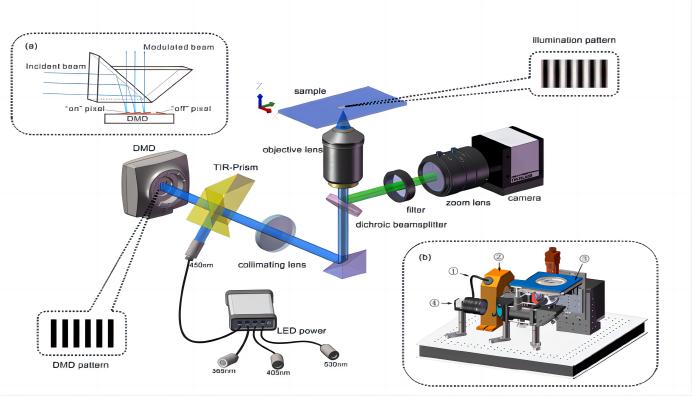Super resolution microscopy
Among the mainstream optical superresolution microscopic imaging technologies, SIM (Structured Illumination Microscopy) has many advantages, such as high spatiotemporal resolution, low phototoxicity, and three-dimensional imaging capabilities. SIM is a technology proposed based on the Moore effect. The principle is to use a spatially structured beam of light to excite fluorescence, excite a mixed frequency of pattern and fluorophore density, and carry high-frequency information that is usually invisible in the sample to the visible low-pass band of the microscope; In use, DMD is commonly used as a mechanism light generation module to change the direction and phase of the pattern, record fluorescence results, and properly process the obtained multiple image data sets, extract the high-frequency information carried, and reconstruct a super-resolution image. In theory, the lateral resolution of SIM can reach twice that of traditional fluorescent microscopy, and its imaging speed is fast, with no special requirements for fluorescent labeling. These characteristics make SIM have a broader application prospect in subcellular level life science research such as cell physiology and cell dynamics.
